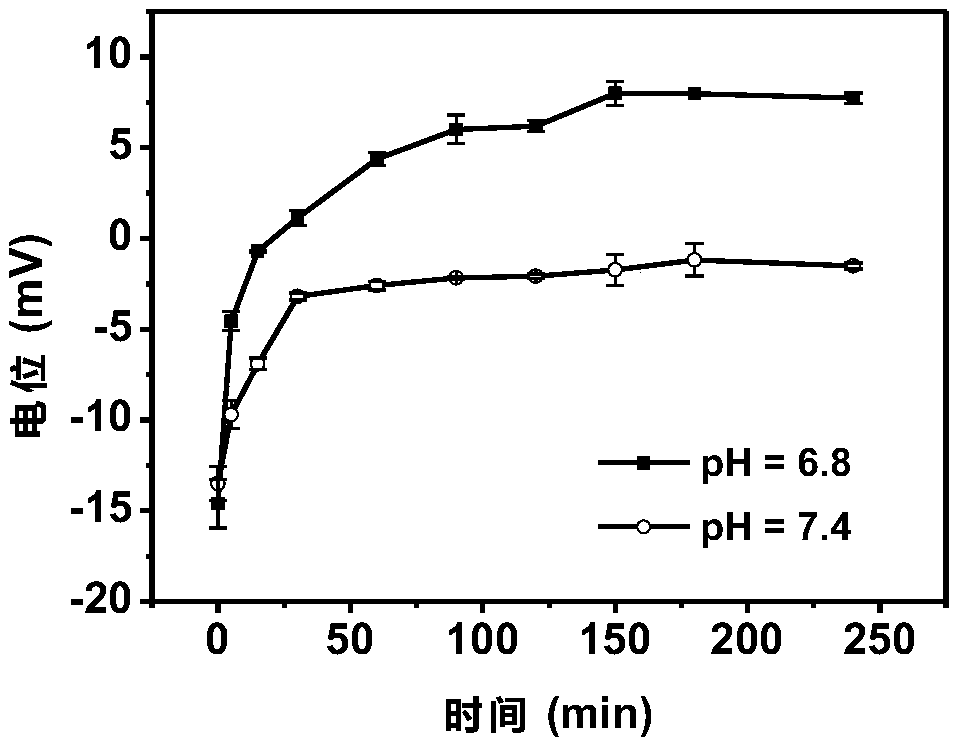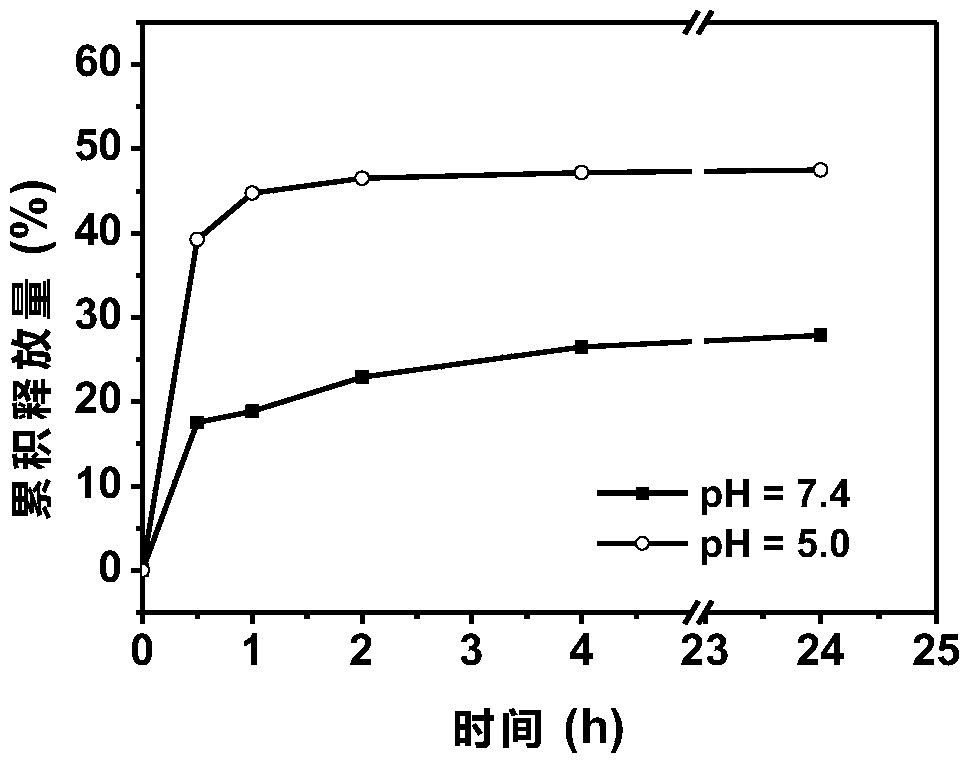PH responsive nanometer carrier as well as preparation method and application thereof
A nanocarrier and nanoparticle technology, which is applied in the directions of non-active ingredient medical preparations, medical preparations containing active ingredients, and pharmaceutical formulas, can solve the problem of inability to efficiently transport large-sized biological macromolecules such as proteins, etc. Achieve the effect of avoiding early leakage and release
- Summary
- Abstract
- Description
- Claims
- Application Information
AI Technical Summary
Problems solved by technology
Method used
Image
Examples
Embodiment 1
[0047] A method for preparing mesoporous silica nanoparticles for pH-responsive controlled release of protein drugs, the preparation method mainly comprising the following steps:
[0048] (1) Reaction of 3-aminopropyltriethoxysilane with 2,3-dimethylmaleic anhydride to obtain a silane coupling agent containing an acid-sensitive amide bond. Specifically, 3-aminopropyltriethoxysilane is added to the dry tetrahydrofuran solution, triethylamine is added to adjust the pH of the solution to be 8.5, and 2,3-dimethylmaleic anhydride is added in an amount equal to that of the substance, at 25 °C for 24 hours.
[0049] (2) Using ethyl acetate as the pore-enlarging agent, using cetyltrimethylammonium bromide and the pore-enlarging agent as the template, self-assembled to form a mesoporous structure, the silicon source was hydrolyzed and condensed under alkaline conditions, and then The template is removed to obtain mesoporous silica nanoparticles. Specifically, dissolve 100 mg of cetyl...
Embodiment 2-6
[0056] Preparation method of mesoporous silica nanoparticles with different pH response thresholds. The preparation method of mesoporous silica nanoparticles is the same as that of Example 1. Silane coupling agents containing different acid-sensitive chemical bonds undergo hydrolysis condensation reaction with mesoporous silica nanoparticles to obtain mesoporous silica nanoparticles with different pH response thresholds. Table 1 lists the pH response thresholds of several different acid-sensitive chemical bonds.
[0057] Table 1
[0058]
Embodiment 7
[0060] pH-responsive mesoporous silica nanoparticles surface charge inversion assay.
[0061] The mesoporous silica nanoparticles containing acid-sensitive amide bonds prepared in Example 1 were dispersed in 20 mL of buffer solutions with different pH values (pH=6.8, 7.4), and 1 mL of the solutions were taken out at certain time intervals, and used Real-time monitoring of the zeta potential of pH-responsive mesoporous silica nanoparticles by laser particle size analyzer ( figure 2 ). The results showed that the surface potential of the mesoporous silica nanoparticles containing acid-sensitive amide bonds increased continuously in the buffer solution of pH=6.8, and the transition from negative to positive was realized within 30 minutes. However, in the buffer solution with pH=7.4, although the potential of the mesoporous silica nanoparticles increases slightly, the negative charge remains throughout the observation time. It shows that the mesoporous silica nanoparticles ha...
PUM
| Property | Measurement | Unit |
|---|---|---|
| diameter | aaaaa | aaaaa |
| pore size | aaaaa | aaaaa |
| pore size | aaaaa | aaaaa |
Abstract
Description
Claims
Application Information
 Login to View More
Login to View More - R&D
- Intellectual Property
- Life Sciences
- Materials
- Tech Scout
- Unparalleled Data Quality
- Higher Quality Content
- 60% Fewer Hallucinations
Browse by: Latest US Patents, China's latest patents, Technical Efficacy Thesaurus, Application Domain, Technology Topic, Popular Technical Reports.
© 2025 PatSnap. All rights reserved.Legal|Privacy policy|Modern Slavery Act Transparency Statement|Sitemap|About US| Contact US: help@patsnap.com



